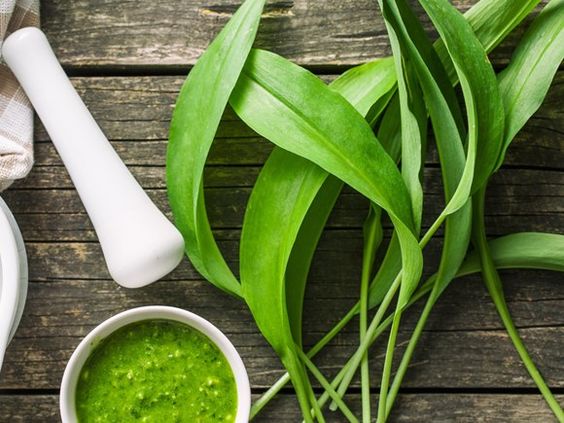under the lens - Allium ursinum
Allium ursinum / Wild Garlic
One of the first plants to emerge in the understories of the deciduous forests of Europe, it creates an early spring carpet of dense green foliage. With that fresh green color and an unmistakable crisp fragrance- somewhere between garlic and chives- it truly awakes the senses after the long sleepy winter.
Family: Allium ursinum
Common Name: Wild Garlic
Distribution: Eurasia
Habitat: Deciduous forests
Bloom Time: April - May
Other: Edible, Medicinal (leaves and bulbs)
Hibernating bears, upon awakening, are known to favor this early sprouting green, digging up the earth to reach the sweet bulbs of the plant. Ursus is Latin for bear, and the plant’s botanical name of A. ursinum refers to this affinity.
Wild garlic thrives in wet, humus-rich soils, and is found growing wild on damp forest floors, often on streambanks or in forested riparian areas. Because it tolerates these conditions, it also does well in shade gardens, and in mature gardens it will often spread freely, existing somewhere between a cultivated and wild state.
photograph: “wild garlic flowering in woodland” by ukgardenphotos, licensed under CC BY-NC-ND 2.0 / cropped from original
The same properties that make this plant a favorite food for bears and wild boars have made it into a traditionally popular cooking ingredient for many cultures throughout Europe. The entire plant is edible, but the young leaves, picked before the flowers bloom, are particularly valued for their delicate flavor. It is eaten cooked in soups and sauces, and is used raw in salads and as an ingredient in breads. One of its most popular uses is as a substitute for basil to create a tangy pesto sauce.
As a relative to the cultivated garlic (A. sativum), it also has many of the same medicinal properties. Since the early 18th century, it was already known to ‘purify the blood’, and is still used today as a proven way to lower blood pressure and reduce high cholesterol, thus reducing the risk of heart problems. It is a strong antimicrobial, effective in treating respiratory infections- the notorious ‘garlic breath’ is actually beneficial, as it indicates that the antibacterial compounds are present in the airways!
Because of this plant’s popularity, it is especially important to be aware of how to properly forage it, either from the wild or from your garden. There are a number of poisonous look-alikes, and there are many documented deaths of people who have eaten improperly identified greens. Even though the plant seems plentiful, improper or overharvesting can quickly decimate wild populations, and it is our responsibility to educate ourselves on how to sustainably collect from the wild or to refrain when needed.
Are you interested in trying out some traditional dishes using wild garlic? Here are some important resources and recipes to get you started!
Photo: www.woodlandtrust.org.uk
This should be your first stop. The Woodland Trust has put together a great list of responsible foraging guidelines, which apply not only to wild garlic, but to all plants foraged from the wild.
Photo: www.woodlandtrust.org.uk
The Woodland Trust has also put together a list of foraging guidelines specific to wild garlic and has put together some tips for ensure a proper identification.
Celia Lewis has written and beautifully illustrated this guide to the changing seasons of the British countryside, including information on many of the common flora and fauna. She supplements the information with folklore, crafts, and recipes, including one for the beloved wild garlic pesto!
Sources:
1. “Allium ursinum”. Wikipedia. Wikimedia Foundation Web: April 08, 2018. https://en.wikipedia.org/wiki/Allium_ursinum
2. “Allium ursinum-L”. Plants for a Future. Plants for a Future: April 20, 2018. https://www.pfaf.org/user/plant.aspx?LatinName=Allium+ursinum
3. “Bärlauch”. Wikipedia. Wikimedia Foundation Web: April 08, 2018. https://de.wikipedia.org/wiki/B%C3%A4rlauch
4. Kospach, J. (2015, March) Sättgrünes Blättermeer. Servus in Stadt & Land, 63-66.
5. Lauber, K; Wagner, G; Gygax, A. (2012). Flora Helvetica. Bern: Haupt.
6. Simmonds, M; Howes, M.J; Irving, J. (2016). The Gardener’s Companion to Medicinal Plants: An A-Z of Healing Plants and Home Remedies. London: Francis Lincoln Limited




